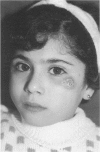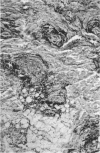Abstract
Cutaneous leishmaniasis has been endemic in Aleppo, Syria, for generations. Recently there has been a clear increase in the incidence of the disease, and more patients have shown a lack of response to antimonials. We report the results of a survey, undertaken over the period 2-17 January 1995, at a general hospital in Aleppo, of all patients presenting with cutaneous leishmaniasis. Patients were grouped according to the stage of their disease, and surgical biopsies were carried out for histopathological investigation. Patients who were unresponsive to treatment and proceeded to chronicity were predominantly children aged under 15 years with facial lesions. Histopathological examination showed that the inflammatory changes had reached the upper layers of the subcutaneous tissues in 10 of the 25 chronic cases (40%) and three of the four acute cases (75%). These levels of the skin are not directly reached by the antimonials administered intralesionally. The inadequacy of the intralesional method alone and technical errors in administration are discussed.
Full text
PDF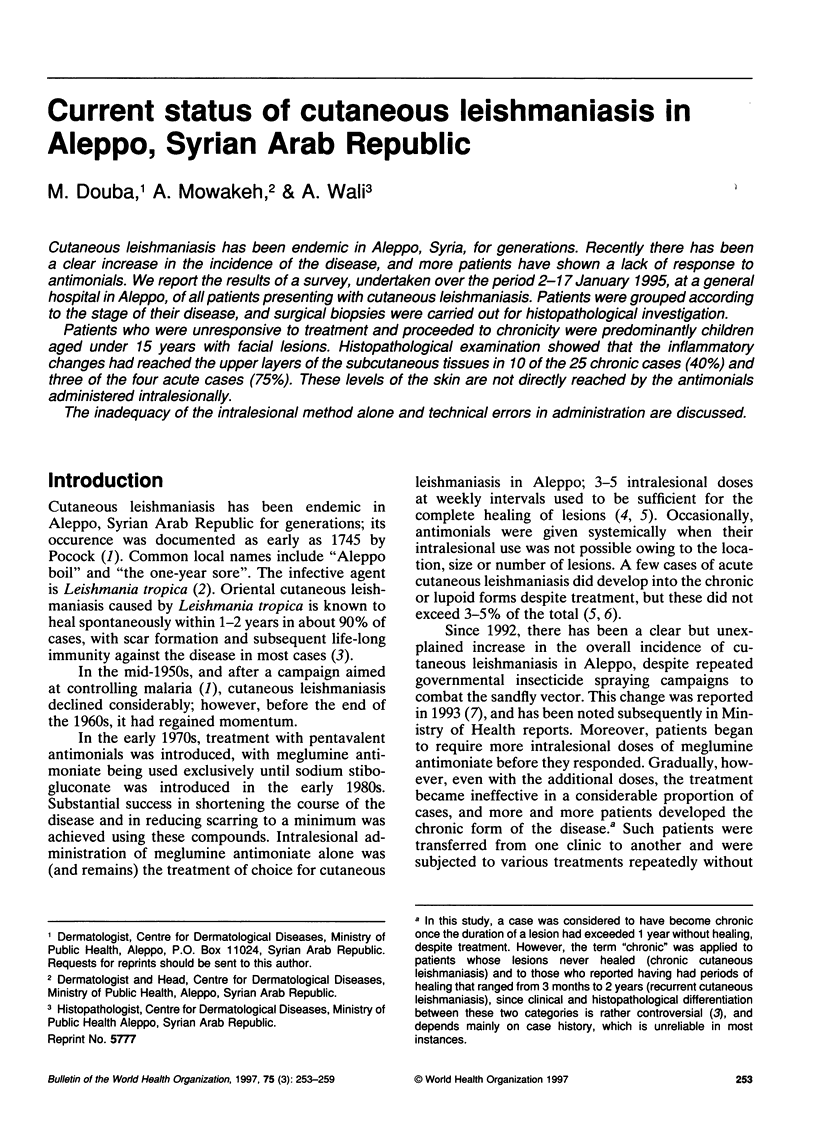
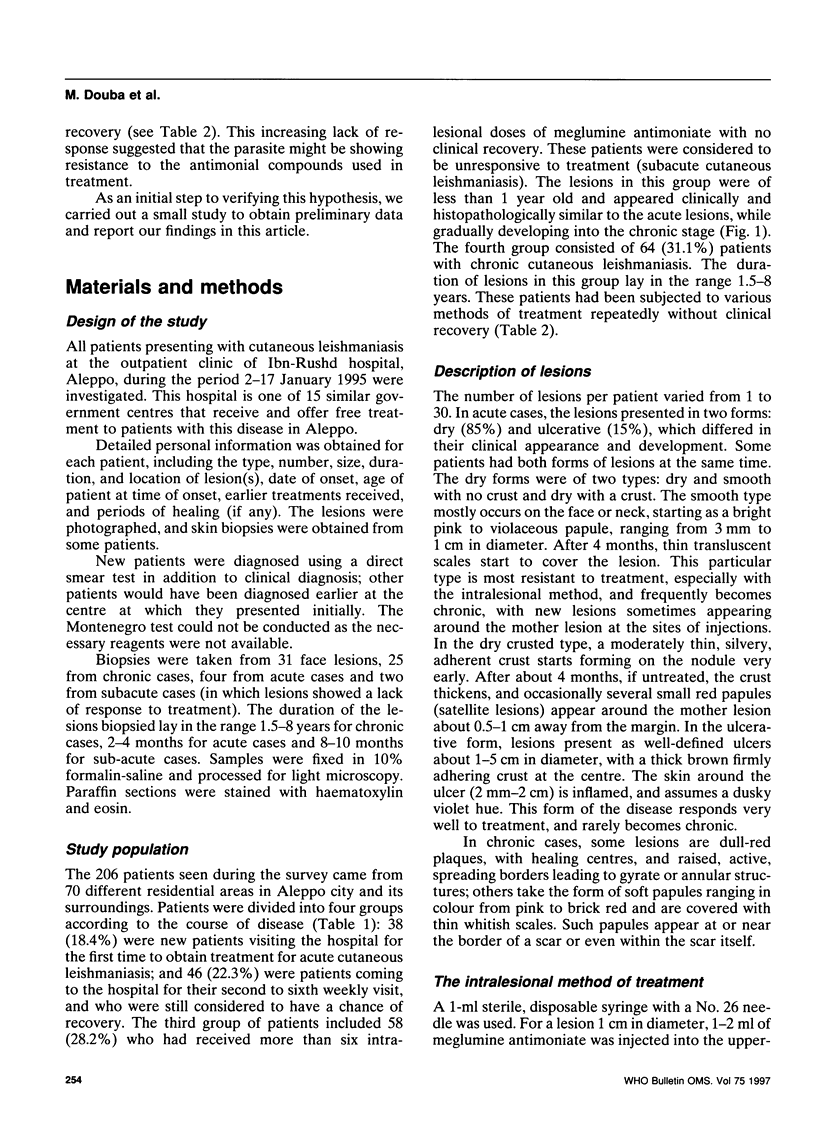
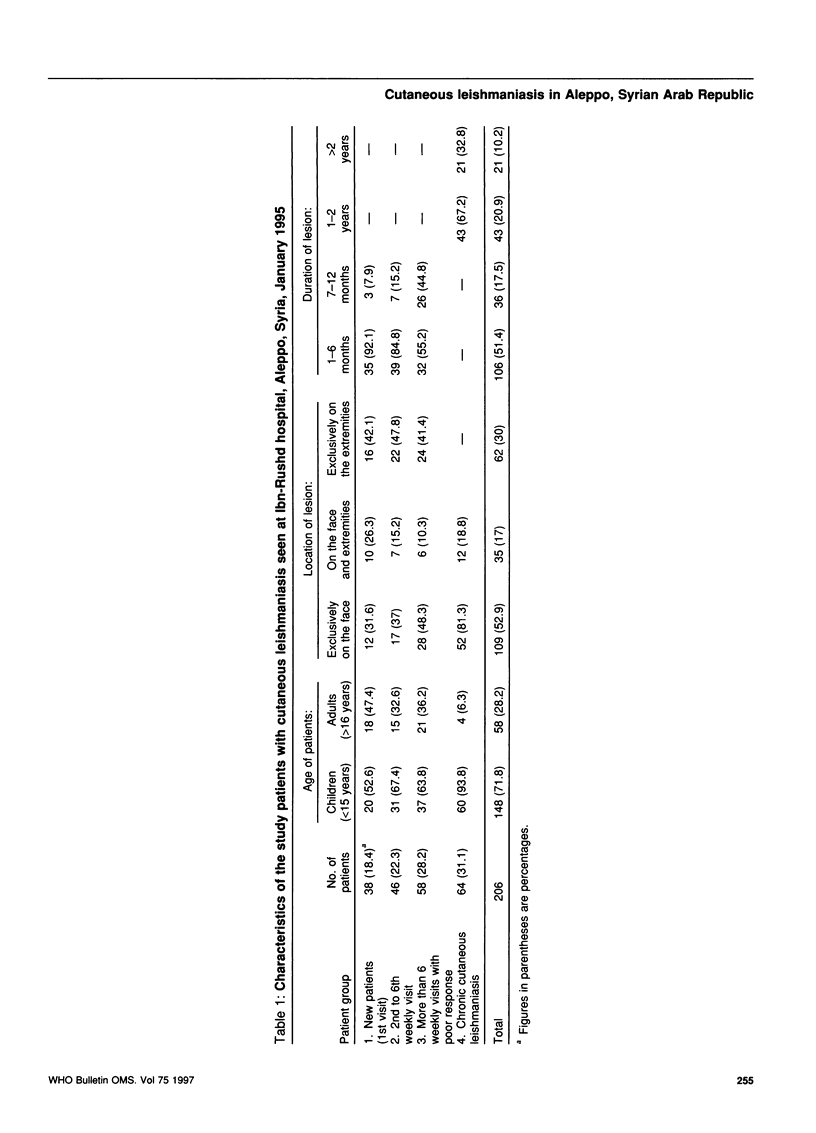
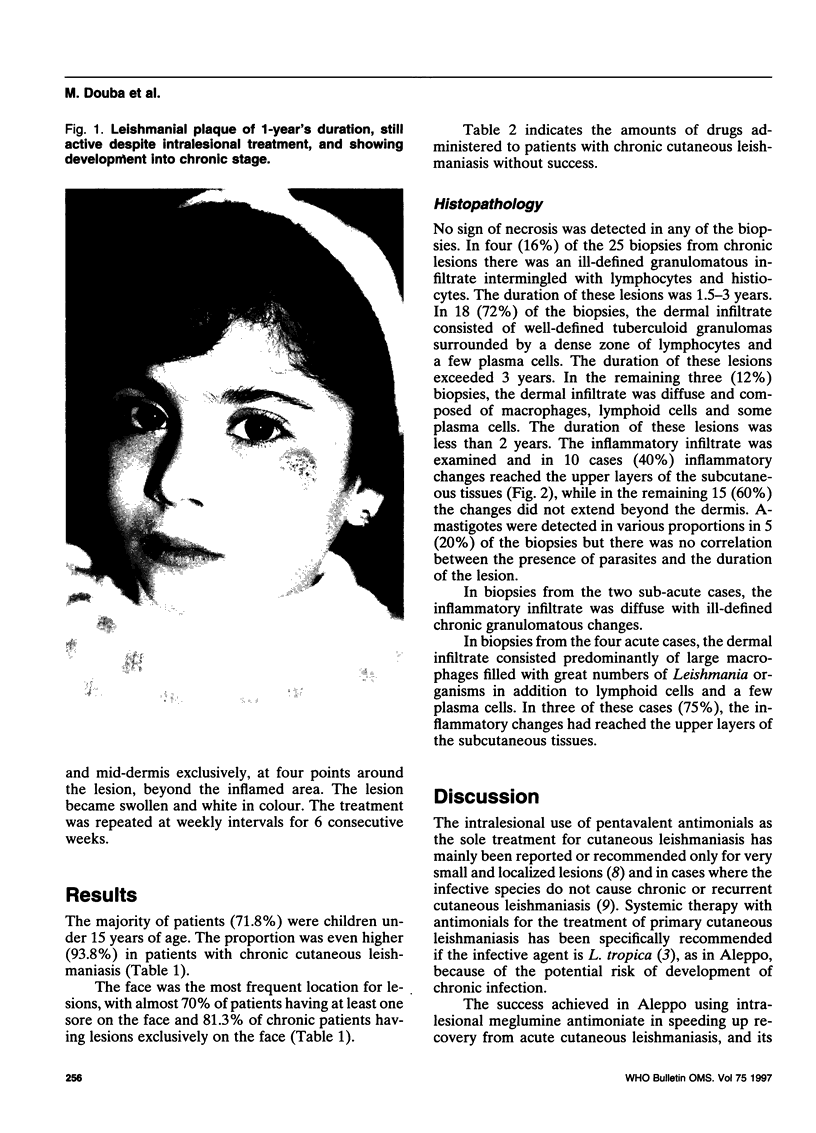
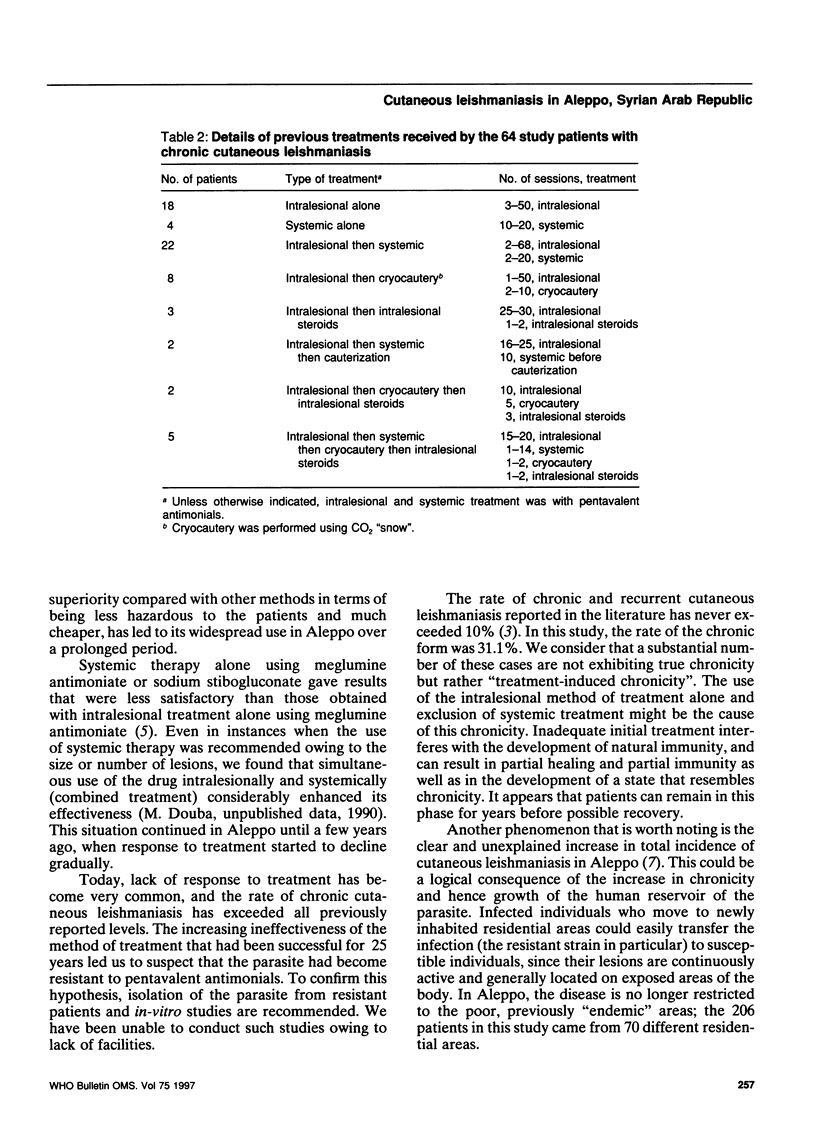
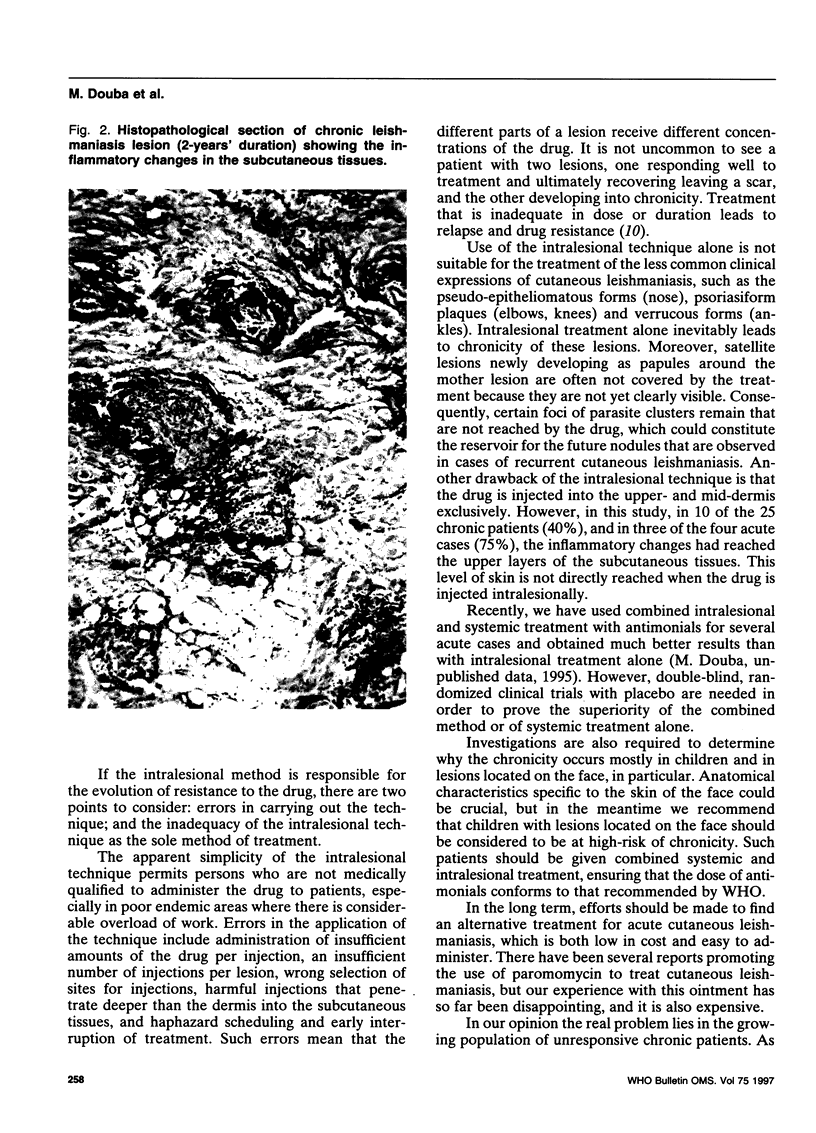
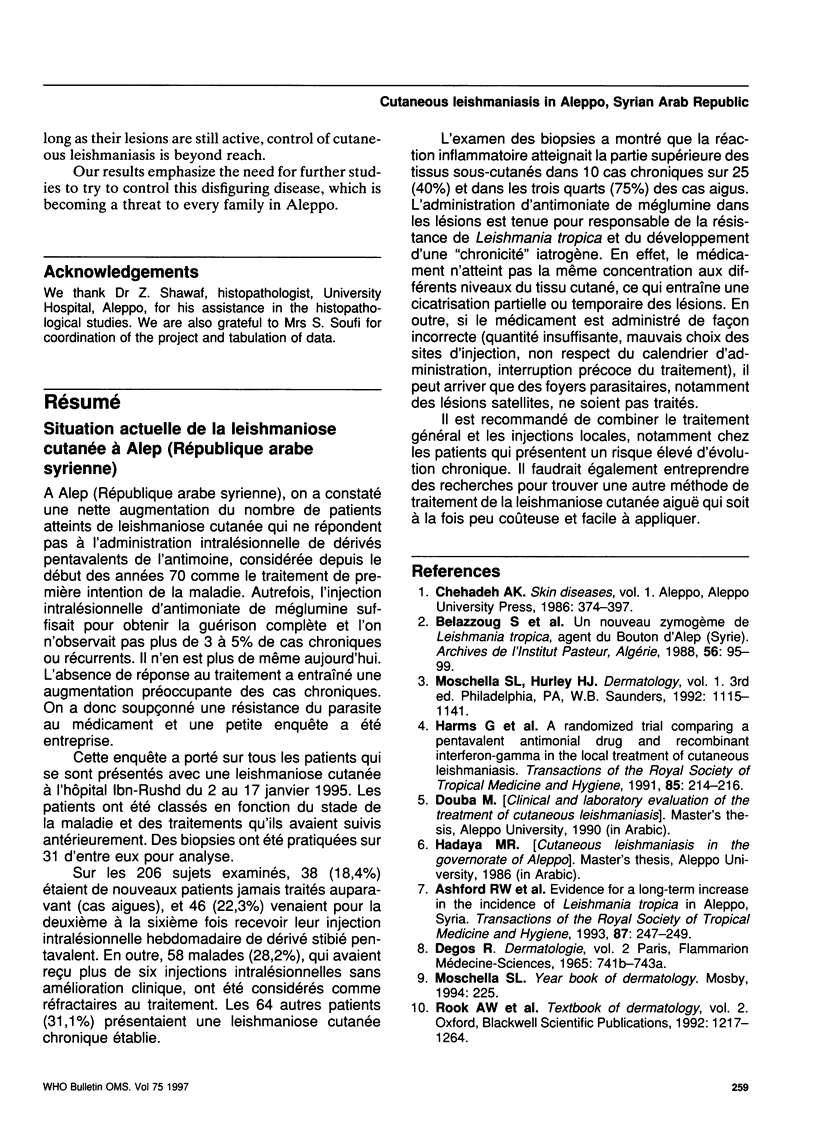
Images in this article
Selected References
These references are in PubMed. This may not be the complete list of references from this article.
- Ashford R. W., Rioux J. A., Jalouk L., Khiami A., Dye C. Evidence for a long-term increase in the incidence of Leishmania tropica in Aleppo, Syria. Trans R Soc Trop Med Hyg. 1993 May-Jun;87(3):247–249. doi: 10.1016/0035-9203(93)90111-3. [DOI] [PubMed] [Google Scholar]
- Belazzoug S., Pratlong F., Rioux J. A. Un nouveau zymodeme de Leishmania tropica, agent du bouton d'Alep (Syrie). Arch Inst Pasteur Alger. 1988;56:95–99. [PubMed] [Google Scholar]
- Harms G., Chehade A. K., Douba M., Roepke M., Mouakeh A., Rosenkaimer F., Bienzle U. A randomized trial comparing a pentavalent antimonial drug and recombinant interferon-gamma in the local treatment of cutaneous leishmaniasis. Trans R Soc Trop Med Hyg. 1991 Mar-Apr;85(2):214–216. doi: 10.1016/0035-9203(91)90026-u. [DOI] [PubMed] [Google Scholar]



